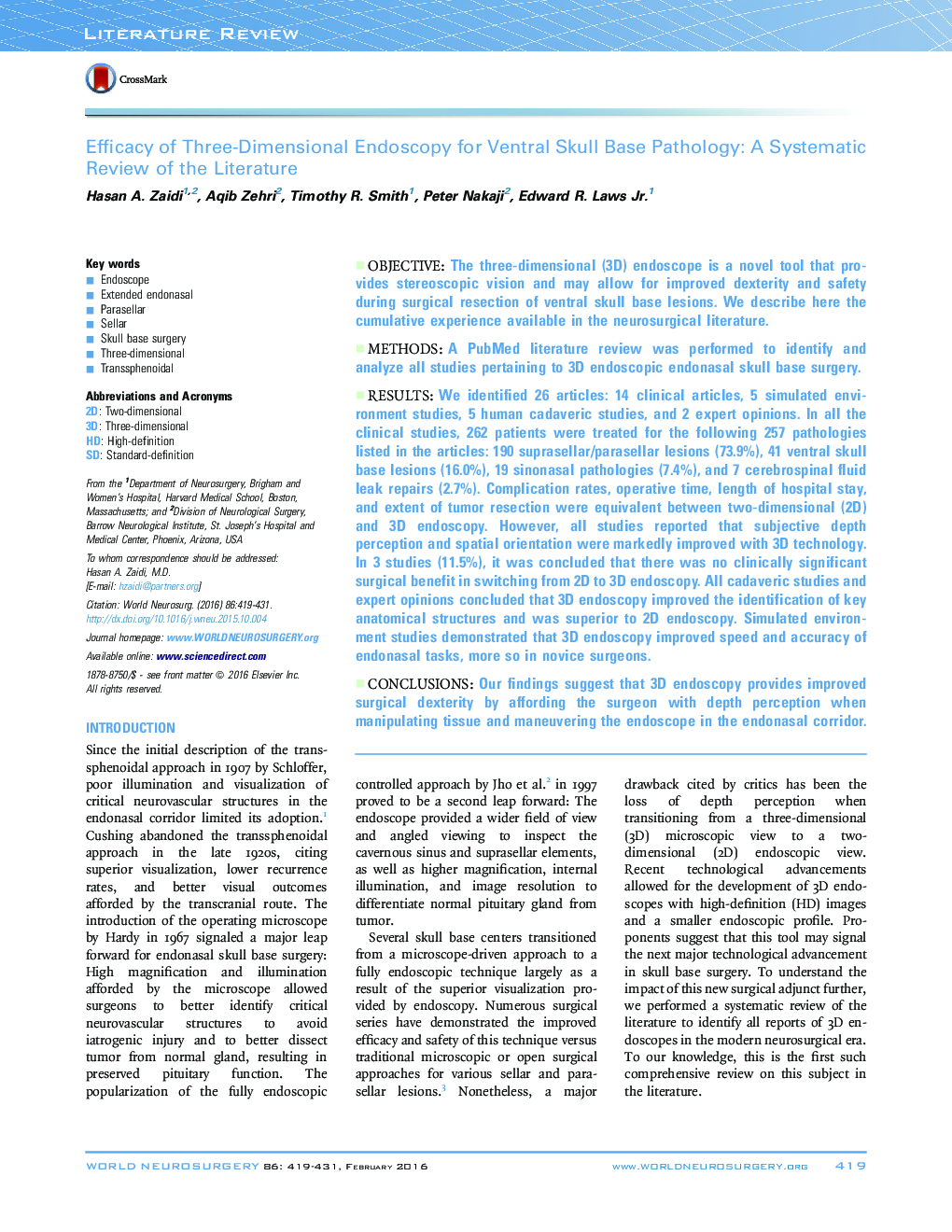| Article ID | Journal | Published Year | Pages | File Type |
|---|---|---|---|---|
| 6044784 | World Neurosurgery | 2016 | 13 Pages |
ObjectiveThe three-dimensional (3D) endoscope is a novel tool that provides stereoscopic vision and may allow for improved dexterity and safety during surgical resection of ventral skull base lesions. We describe here the cumulative experience available in the neurosurgical literature.MethodsA PubMed literature review was performed to identify and analyze all studies pertaining to 3D endoscopic endonasal skull base surgery.ResultsWe identified 26 articles: 14 clinical articles, 5 simulated environment studies, 5 human cadaveric studies, and 2 expert opinions. In all the clinical studies, 262 patients were treated for the following 257 pathologies listed in the articles: 190 suprasellar/parasellar lesions (73.9%), 41 ventral skull base lesions (16.0%), 19 sinonasal pathologies (7.4%), and 7 cerebrospinal fluid leak repairs (2.7%). Complication rates, operative time, length of hospital stay, and extent of tumor resection were equivalent between two-dimensional (2D) and 3D endoscopy. However, all studies reported that subjective depth perception and spatial orientation were markedly improved with 3D technology. In 3 studies (11.5%), it was concluded that there was no clinically significant surgical benefit in switching from 2D to 3D endoscopy. All cadaveric studies and expert opinions concluded that 3D endoscopy improved the identification of key anatomical structures and was superior to 2D endoscopy. Simulated environment studies demonstrated that 3D endoscopy improved speed and accuracy of endonasal tasks, more so in novice surgeons.ConclusionsOur findings suggest that 3D endoscopy provides improved surgical dexterity by affording the surgeon with depth perception when manipulating tissue and maneuvering the endoscope in the endonasal corridor.
